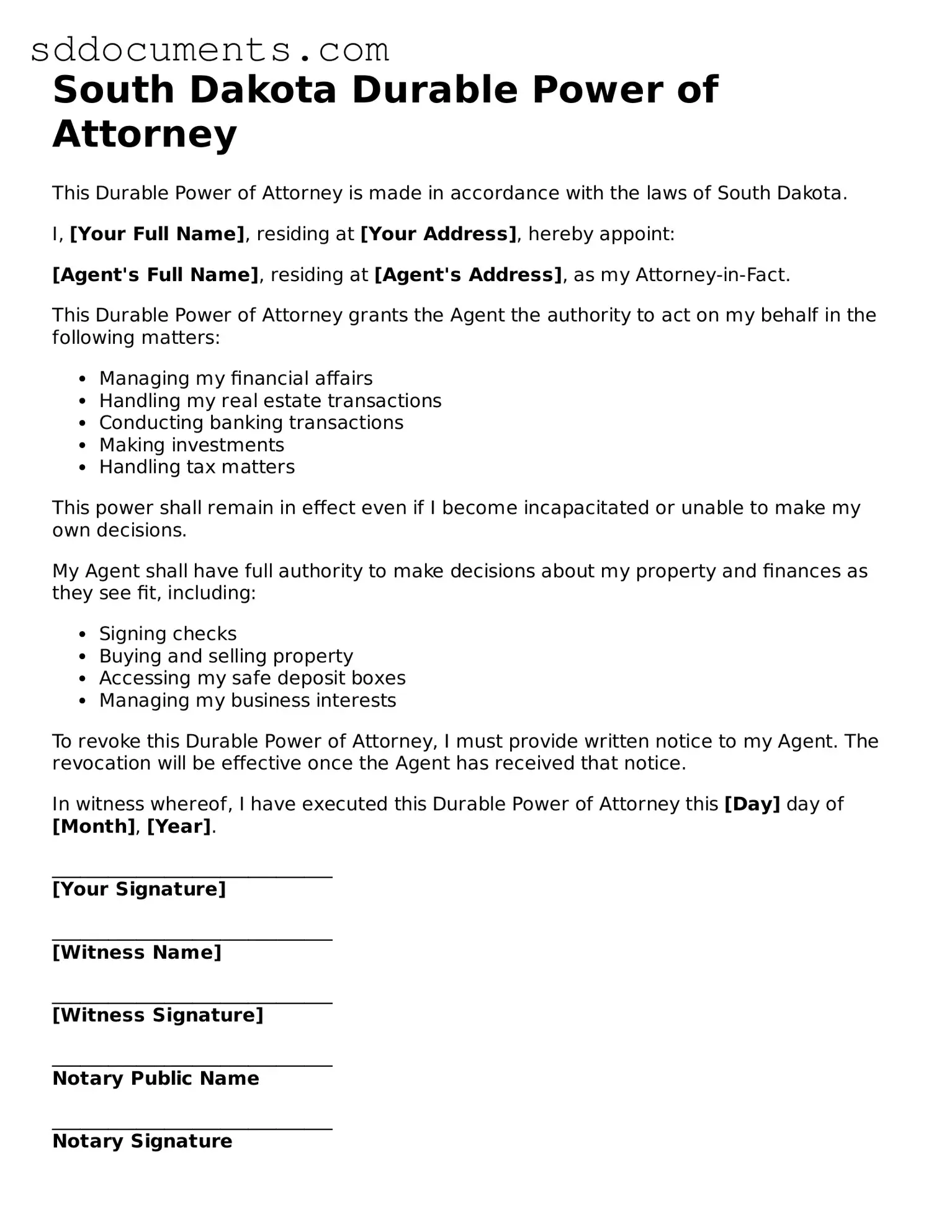Free Durable Power of Attorney Template for South Dakota
A Durable Power of Attorney in South Dakota is a legal document that allows an individual, known as the principal, to appoint someone else, called the agent, to make decisions on their behalf in financial or health matters when they are unable to do so. This form remains effective even if the principal becomes incapacitated, ensuring that their wishes are respected. To take control of your future, consider filling out the Durable Power of Attorney form by clicking the button below.
Customize Document Online
